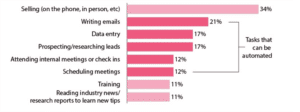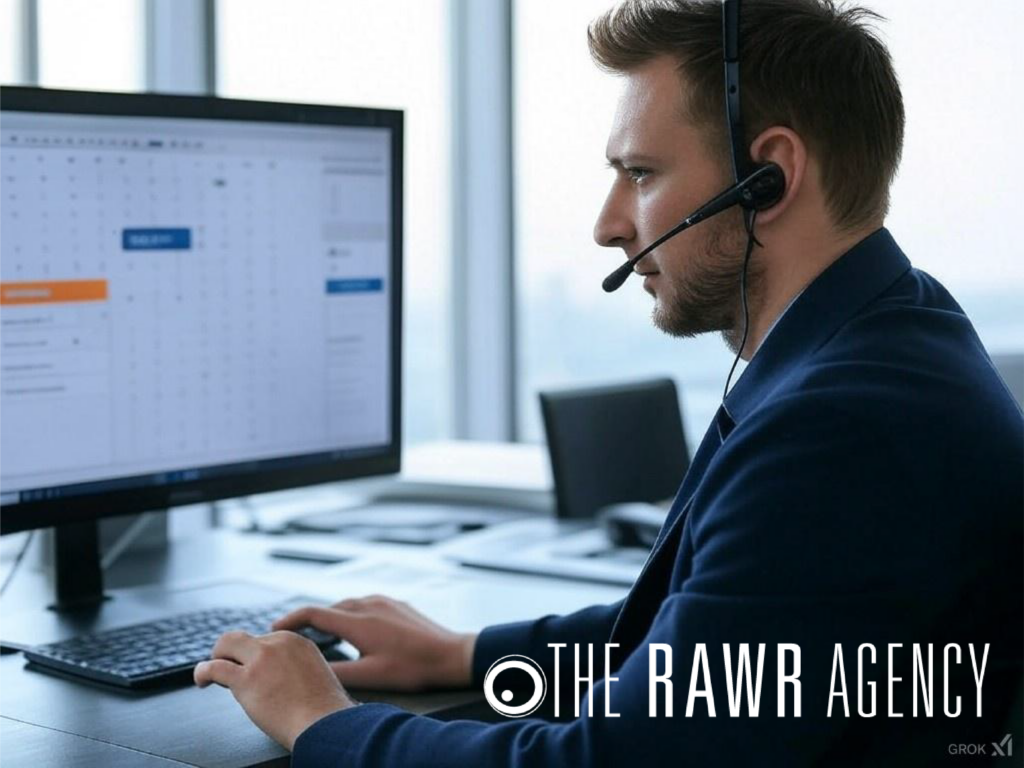B2B appointment setting is a sales development activity where sales representatives reach out to potential leads via phone, email, or social media. The goal? To nurture prospects and schedule meetings with qualified leads.
This process is considered successful when these reps secure appointments with prospects who are genuinely interested in your offerings. B2B appointment setting can be handled by an internal team or outsourced to a third party specializing in this service.
What Do B2B Appointment Setters Do?
B2B appointment setting involves more than just making calls or sending emails—it’s a multifaceted process. In fact, research shows that salespeople spend only about one-third of their day actively engaging with prospects.
Here’s a quick breakdown of how appointment setters spend their time:

B2B appointment setting isn’t just about time spent—it’s about having a clear process, the right tools, and a strategic approach to lead generation.
Key Components of B2B Appointment Setting
Here’s a step-by-step guide to how B2B appointment setting companies operate:
- Identifying Needs
Companies often lack sufficient sales opportunities due to limited resources or inefficient processes. For instance, sales teams might be so focused on closing deals that they don’t have time to identify new prospects.
- Defining the Target Market
The first step is narrowing down the target market by industry, location, and company size. Many businesses analyze their existing customer base to identify patterns and refine their target audience.
- Building Buyer Personas
Buyer personas often align with specific job titles. For most B2B companies, LinkedIn is a goldmine for finding key decision-makers. Tools like ZoomInfo or DiscoverOrg can help secure accurate contact details.
- Leveraging Technology
Successful appointment setting relies on a robust tech stack, including CRMs, sales automation tools, calling software, and reporting systems. The tools should integrate seamlessly with your existing processes for maximum efficiency.
- Proposal Development
Once goals are clear, appointment setting companies present a proposal outlining activities, payment structures, and expected outcomes.
- Contract Finalization
A formal contract is then signed, ensuring clarity on deliverables and important policies, such as cancellation terms.
- Project Kickoff
The kickoff stage involves configuring tools, training teams, and planning outreach. Companies share essential materials like call scripts and marketing collateral during this phase.
- Message Approval
Appointment setting firms work closely with clients to approve email templates and call scripts before launching campaigns.
- Scheduling Meetings
Once outreach begins, the firm schedules qualified meetings directly on the client’s calendar, ensuring alignment between prospects and sales teams.
- Ongoing Review and Optimization
Weekly reviews help refine strategies and improve results. These continuous adjustments are critical to the success of appointment setting campaigns.
B2B Appointment Setting Services
There are three primary models for appointment setting services:
- Internal Teams: Your in-house sales team manages appointment setting.
- External, Non-Dedicated Teams: Third-party teams split their time across multiple clients.
- External, Dedicated Teams: Fully dedicated reps focus exclusively on your accounts.
Each option has its pros and cons, depending on your company’s resources and goals.
Costs of Outsourced B2B Appointment Setting
Appointment setting companies typically offer three pricing models:
- Base Monthly Fee: A standard fee based on the level of service or dedicated time, often paired with performance-based commissions.
- Activity-Based: Costs depend on the agreed-upon number of activities, providing flexibility to scale or adjust based on results.
- Pay-Per-Appointment: Charges are tied to each appointment set, sometimes including an upfront implementation fee.
Building an Internal B2B Appointment Setting Team
If you choose to build an internal team, here are the core components to consider:
- Data: Invest in high-quality contact data to save time and improve accuracy.
- Technology: Equip your team with tools like LinkedIn Sales Navigator, SalesLoft, and calling platforms for efficiency.
- Management: Inside sales teams often require close supervision and ongoing training.
- Continuous Adjustments: Regularly refine processes and strategies to optimize performance.
Outsourcing can provide short-term success and flexibility, while building an internal team offers long-term control and scalability.
What’s Next?
B2B appointment setting is a critical component of enterprise sales strategies, particularly for companies offering high-value solutions. Whether you choose to build an internal team or partner with a third-party provider, having a clear plan and the right tools is essential for success.
Need help deciding between an internal team or outsourcing? Contact us today for personalized guidance!

